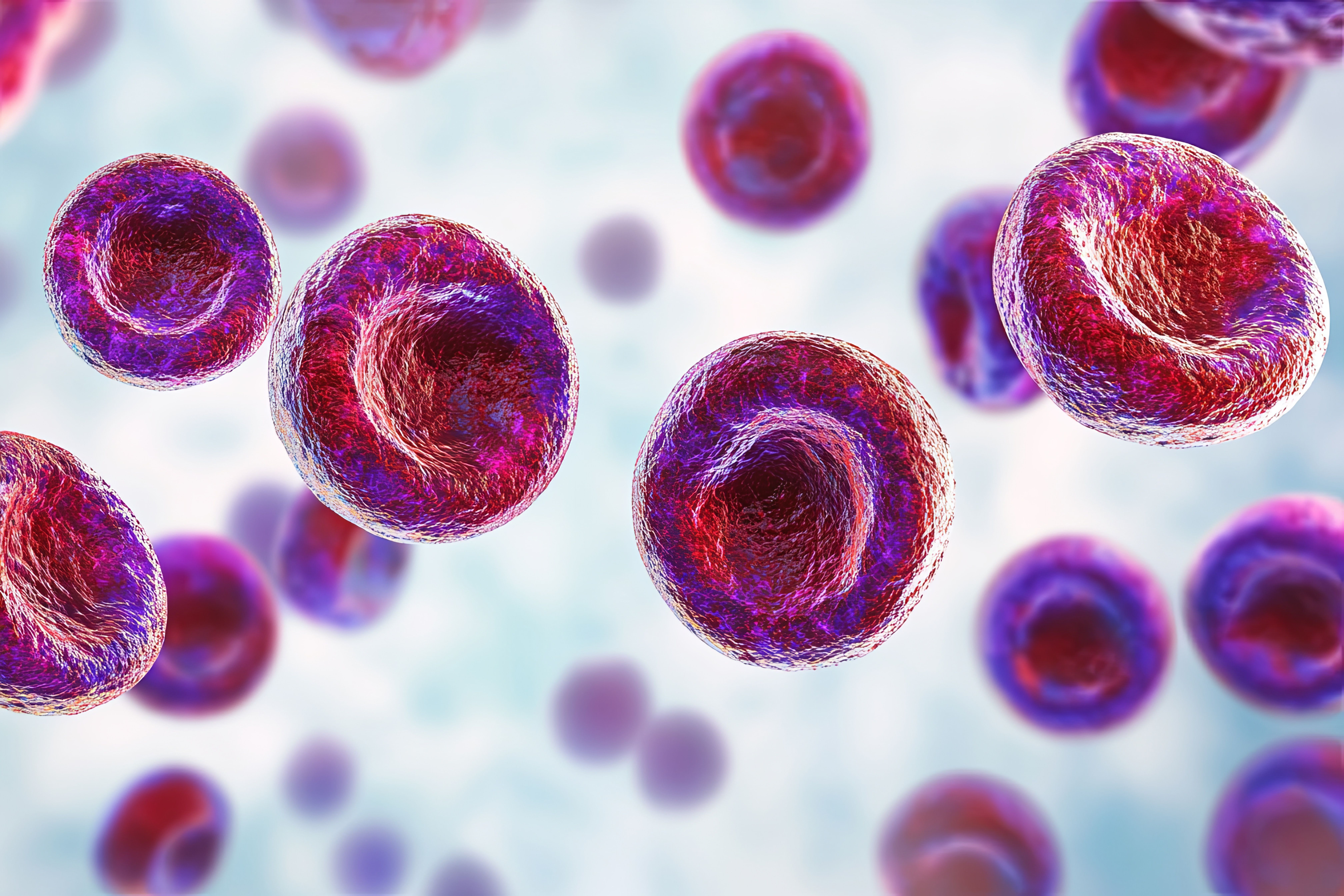Article
Revolutionary Treatment for Sickle Cell Disease Shows Promise in Clinical Trial
Author(s):
Sickle cell disease is the most common red blood cell disorder in the United States, having been diagnosed in approximately 100,000 African Americans alone. The lack of oxygen from sickle cell buildup can lead to acute pain crises, joint and organ damage, stroke, and reduced life expectancy.
Stem cells genetically engineered to produce healthy hemoglobin have demonstrated remarkable results in 3 adult patients with sickle cell disease (SCD) in the open-label, nonrandomized, single-center Gene Transfer for Sickle Cell Disease trial.1 Data from these patients, the adult cohort of the trial, were presented last month during the American Society of Hematology’s (ASH’s) annual meeting.
SCD primarily affects individuals with African ancestry,2 and it is the most common red blood cell (RBC) disorder in the United States, having been diagnosed in approximately 100,000 African Americans alone. Originally a gene that evolved as protection against malaria,3 the resulting lack of oxygen from sickle cell buildup can lead to acute pain crises, joint and organ damage, stroke, and reduced life expectancy.4
During a press briefing on the results, David A. Williams, MD, chief scientific officer at Boston Children’s Hospital (BCH) and the study’s senior author, said, “It’s been known for some time that the severity of sickle cell disease is attenuated in patients that have a high level of fetal hemoglobin expression.”5
Fetal hemoglobin (HbF) is produced before birth, to facilitate oxygen transfer from the mother’s blood,6 and for several weeks after, before being replaced with the adult form of hemoglobin, the form prone to sickling.4
This knowledge serves as the backbone of the ongoing study for a potential new gene therapy for SCD, of which a sibling-matched stem cell transplant (STC) is the only cure.4 Hydroxyurea has been used since 1998, but has serious side effects that include diarrhea, seizures, joint stiffness or swelling, and vomiting; blood transfusions can be risky as well.7,8
In the present study, the investigators targeted the BCL11A protein, which preclinical research from BCH and Dana-Farber Cancer Institute shows regulates the switch of HbF to adult hemoglobin, calling it “an appealing therapeutic target.”6,9 The 3 patients, all at least 18 years old, first underwent 2 bone marrow harvests 4 weeks apart—one for the study’s gene transfer and the other for back-up marrow—before receiving blood transfusions for 3 months.1 The autologous CD34+ cells were collected from the marrow following plerixafor mobilization. Plerixafor enables stem cell collection by helping the bone marrow to release them.10
Next, using BCH-BB694, a lentiviral vector—the delivery method that introduces new genetic information to host cells11—the investigators modified the patients’ CD34+ cells with instructions to target and repress BCL11A by encoding a short hairpin RNA.9 These modified cells were then tested for safety. Following busulfan conditioning, intense chemotherapy meant to prepare a patient for SCT, on days —5 through –2,1 the CD34+ cells were reintroduced to the patients.
By day 22, neutrophil engraftment had occurred in all patients, with no grade 3/4 adverse events beyond what was expected,9 who are now 18, 10, and 9 months post infusion.4 Two of the patients have stopped RBC transfusion, while the third resumed them at the 3-month mark due to moyamoya, a progressive narrowing off the carotid artery.12 Results now show the patients are producing normal or near normal hemoglobin levels, with enough HbF to prevent sickling, noted Williams,4 compared with 3 hydroxyurea-treated comparators.9
During the study’s session at ASH, presenting author, Erica Esrick, MD, attending physician at BCH, drove home that “fetal hemoglobin prevents the polymerization of sickle hemoglobin [and] pancellular distribution of fetal hemoglobin is a therapeutic goal because it protects a large proportion of cells from sickling. The transcription factor BCL11A is a strong repressor of gamma-globin, making it an appealing target for fetal hemoglobin induction.”13
As next steps, the study authors hope to extend their pilot study to 15 subjects, having received approval from the Institutional Review Board for Protection of Human Subjects in Research and National Institutes of Health (NIH) to do so; add biomarkers; and expand the study into a multisite phase 2/3 study with funding from the NIH.
References
1. Gene Transfer for Sickle Cell Disease. clinicaltrials.gov/ct2/show/NCT03282656?term=NCT03282656&draw=2&rank=1. Updated May 24, 2018. Accessed January 15, 2020.
2. National Heart, Lung, and Blood Institute. Sickle cell disease. NHLBI website. www.nhlbi.nih.gov/health-topics/sickle-cell-disease. Accessed January 15, 2020.
3. LaPook J. Could gene therapy cure sickle cell disease? 60 Minutes. CBS television. March 10, 2019. cbsnews.com/news/could-gene-therapy-cure-sickle-cell-anemia-60-minutes/. Accessed January 14, 2020.
4. Encouraging results seen with novel approach to gene therapy for sickle cell disease [press release]. Orlando, FL: American Society of Hematology; December 10, 2019. hematology.org/Newsroom/Press-Releases/2019/10111.aspx. Accessed January 7, 2020.
5. Williams DA. BCL11A as therapeutic target in SCD: gene therapy trial. Presented at: 61st ASH Annual Meeting; December 7-10, 2019; Orlando, FL. youtube.com/watch?v=oqbmuPxDeEs. Published December 10, 2019. Accessed January 14, 2020.
6. Collins F. 60 Minutes: a CRISPR approach to treating sickle cell. NIH director’s blog. directorsblog.nih.gov/tag/60-minutes/. Published April 2, 2019. Accessed January 14, 2020.
7. Mayo Clinic. Hydroxyurea (oral route). Mayo Clinic website. mayoclinic.org/drugs-supplements/hydroxyurea-oral-route/side-effects/drg-20068109. Updated September 1, 2019. Accessed January 15, 2020.
8. Collins F. Accelerating cures in the genomic age: the sickle cell example. NIH director’s blog. directorsblog.nih.gov/2018/12/11/accelerating-cures-in-the-genomic-age-the-sickle-cell-example/. Published December 11, 2018. Accessed January 15, 2020.
9. Esrick EB, Achebe M, Armant M, et al. Validation of BCL11A as therapeutic target in sickle cell disease: results from the adult cohort of a pilot/feasibility gene therapy trial inducing sustained expression of fetal hemoglobin using post-transcriptional gene silencing. Presented at: 61st ASH Annual Meeting; December 7-10, 2019; Orlando, FL. Abstract LBA-5. ash.confex.com/ash/2019/webprogram/Paper132745.html. Accessed January 7, 2020.
10. Plerixafor. Drugs.com website. drugs.com/mtm/plerixafor.html. Updated January 3, 2020. Accessed January 16, 2020.
11. Lentiviral vectors. Gene Therapy Net website. genetherapynet.com/viral-vector/lentiviruses.html. Accessed January 16, 2020.
12. Moyamoya disease. Mayo Clinic website. mayoclinic.org/diseases-conditions/moyamoya-disease/symptoms-causes/syc-20355586. Accessed January 16, 2020.
13. BCL11A: a new gene therapy target in sickle cell disease? ASH website. ashclinicalnews.org/on-location/ash-annual-meeting/bcl11a-new-gene-therapy-target-sickle-cell-disease/. Published December 20, 2019. Accessed January 16, 2020.





